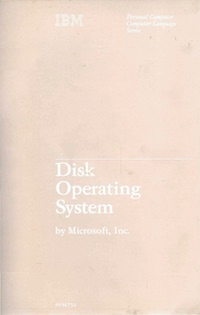PC DOS 2.0: Difference between revisions
(unlink 2.0) |
|||
| (One intermediate revision by the same user not shown) | |||
| Line 11: | Line 11: | ||
==History== | ==History== | ||
A group of Microsoft programmers, led by [[Paul Allen]], [[Mark Zbikowski]], and [[Aaron Reynolds]], rewrote PC DOS 2.0 | A group of Microsoft programmers, led by [[Paul Allen]], [[Mark Zbikowski]], and [[Aaron Reynolds]], rewrote [[PC DOS]] completely for 2.0, separating it from the [[86-DOS]] base of [[PC DOS 1.0]]. | ||
==Versions== | ==Versions== | ||
Latest revision as of 07:57, 29 November 2023

| |
| PC DOS/MS-DOS 2.0 | |
| Developer | Microsoft |
|---|---|
| Publisher | IBM, Microsoft |
| Platforms | x86 |
| Released | 2.0: March 1983 2.05/2.11: October 1983 PC DOS/MS-DOS 2.1/2.01: November 1983 2.2/2.3: 1983 2.13: July 1984 2.25: October 1985 |
| Added to Museum |
Not yet |
PC DOS 2.0 is the second iteration of the PC DOS product line by Microsoft and IBM. It was extended into MS-DOS 2.0 and was also the basis for an operating system packaged by ITT.
History
A group of Microsoft programmers, led by Paul Allen, Mark Zbikowski, and Aaron Reynolds, rewrote PC DOS completely for 2.0, separating it from the 86-DOS base of PC DOS 1.0.
Versions
PC DOS and MS-DOS version 2.0 was released in March 1983.
MS-DOS 2.05, with international support, and MS-DOS 2.11, were released in October 1983. MS-DOS 2.11 was the basis of the ITT version named ITT-DOS 2.11 Version 2.
PC DOS and MS-DOS 2.1, as well as MS-DOS 2.01, were released in November 1983.
MS-DOS 2.2 and 2.3 were released in late 1983. MS-DOS 2.3 was the primary operating system for the Toshiba Pasopia 16.
MS-DOS 2.13, by Zenith, was released was released in July 1984.
MS-DOS 2.25 was released in October 1985. It was a version of 2.11 with better support for Japanese and Korean character sets.